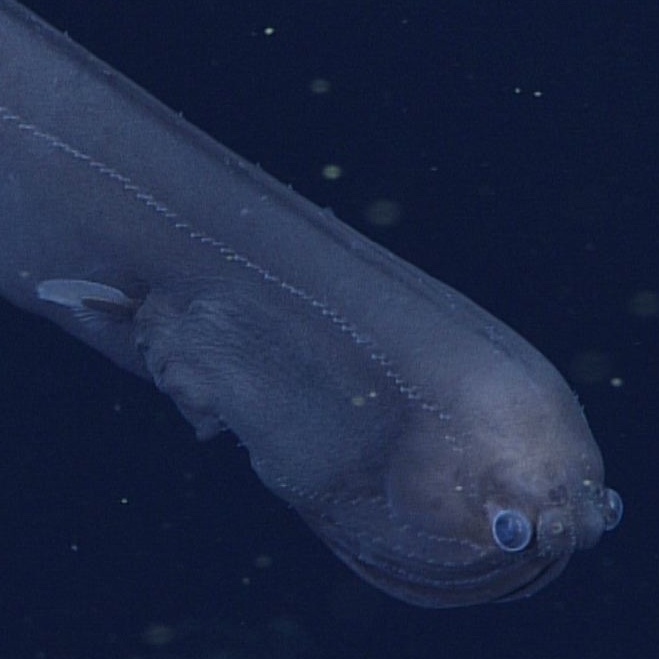The Whiptail Gulper Eel is a species of saccopharyngid eel found in the eastern Pacific Ocean typically at depths of 2,000–3,000 m. They can reach up to almost a meter in length & possess a bioluminescent organ at the tips of their long tails. #EelOrNoEel
https://t.co/ffT00MJwnb
The Dark-shouldered Snake Eel is an eel in the family #Ophichthidae known from the Indo-Pacific: Myanmar to the Society Islands. It lives on reefs at depths of 2–15 m and burrows in mud and sand during the day. Males can reach up to 115 cm. #EelOrNoEel
https://t.co/l1HnfE2c87
The Pouched Lamprey (#Geotria_australis) is a species of Southern Lamprey (Geotriidae) found in New Zealand, Chile, Argentina, Falkland Islands, South Georgia and southern Australia). They are parasitic as adults and grow up to 60 cm. #EelOrNoEel
https://t.co/eGpwyn2HaI
It's time once again for #TeamFish’s #1 #SciComm game #EelOrNoEel where you try to guess if the creature I share is a true #Eel in the order #Anguilliformes or just a sneaky #NoEel imposter. Tweet your guess and I will revEEL the identity of this eely critter in 24 hours
Further study reveled this asymmetry was also internal and suggests these fishes probably lived primarily on their side like flatfishes. Thus this appears to be the first non-flatfish species known to have a completely blind, colorless side. #EelOrNoEel
https://t.co/Xq8ginVcqi
OK, all you exceptional eels & elvers, it's time for the #EelOrNoEel revEEL. This week's featured creature is a sneaky #NoEel imposter. Meet Braun's Pughead Pipefish (#Bulbonaricus_brauni), a species belonging to the family #Syngnathidae.
https://t.co/h1wBbwhDie
The Bobtail Snipe Eel has elongate jaws, a relatively short body for an eel, and a strangely shaped caudal fin. They reach a maximum length about 15 cm and can be found nearly globally at depths of 330 to 5,100 m. #EelOrNoEel
https://t.co/zOnwKHu35S
#Venefica_tentaculata can reach up to 90 cm and is known from the eastern central and northwestern Pacific Ocean, including Mexico, Nicaragua, Japan, and the United States at a depth range of 100 to 500 m. #EelOrNoEel
https://t.co/iYKocLcFuy
Compared to living coelacanths #Holopterygius_nudus was tiny, just 7 cm long, and reminds us that coelacanths were morphologically much more diverse in the past and were experimenting with an eel lifestyle long before true eels evolved hundreds of million years later. #EelOrNoEel
OK, all you exceptional eels & elvers, it's time for the #EelOrNoEel revEEL. This week's featured creature is a sneaky #NoEel imposter or what I like to call a coEELacanth. Meet #Holopterygius_nudus, an eel-like coelacanth that lived in the mid-Devonian ~385 million years ago.



























